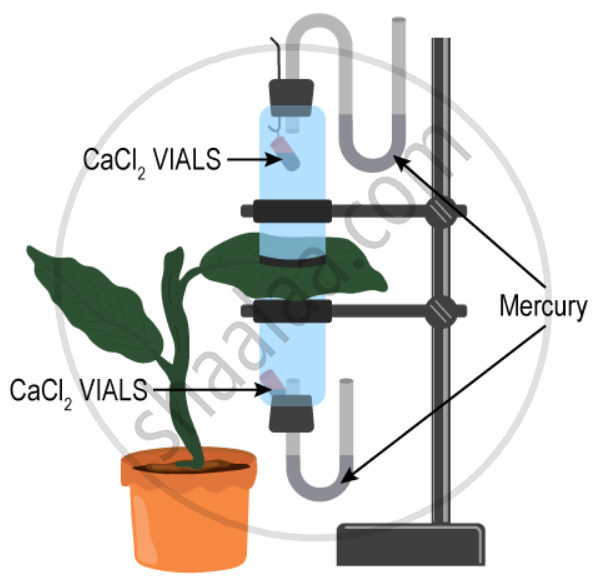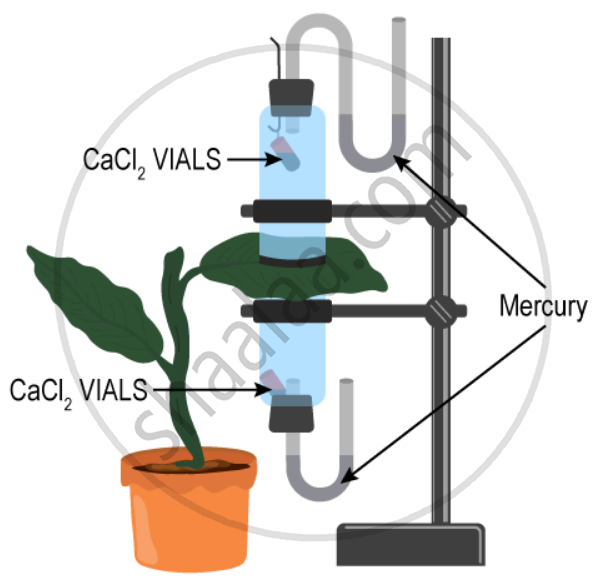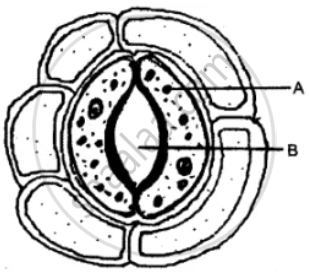Advertisements
Advertisements
प्रश्न
The paper used to demonstrate unequal transpiration in a dicot leaf is ______.
पर्याय
Filterpaper
Litmus paper
Starch paper
Cobalt chloride paper
उत्तर
The paper used to demonstrate unequal transpiration in a dicot leaf is Cobalt chloride paper.
Explanation:
One can use dry Cobalt chloride paper to illustrate transpiration. When this is placed on a transpiring leaf, it changes colour from blue to pink.
APPEARS IN
संबंधित प्रश्न
Name the following:
openings on the stem through which transpiration occurs.
Name the following:
Any two parts of a leaf which allow transpiration.
Choose the correct answer:
Stomata open during day time because guard cells
The apparatus shown in the following diagram is Garreau’s potometer designed to demonstrate unequal transpiration from the two surfaces of a dorsiventral leaf. Before keeping the leaf in between the cups, anhydrous calcium chloride (CaCl2) contained in two small vials were weighed and placed in both the cups. The ends of the cups were closed with corks through which two mercury manometers were connected. After few hours, CaCl2 vials were taken out and weighed again.

What is the purpose of using a manometer?
The apparatus shown in the following diagram is Garreau’s potometer designed to demonstrate unequal transpiration from the two surfaces of a dorsiventral leaf. Before keeping the leaf in between the cups, anhydrous calcium chloride (CaCl2) contained in two small vials were weighed and placed in both the cups. The ends of the cups were closed with corks through which two mercury manometers were connected. After few hours, CaCl2 vials were taken out and weighed again.

What do you mean by transpiration?
The diagram below represents a structure found in a leaf.

Study the same and answer the questions that follow:
(i) Name the pis labeled A and B.
(ii) What is the biological term for the above structure?
(iii) What is the function of the part labeled A?
(iv) Mention two structural features of A, which help in the function mentioned in (iii) above.
(v) Where is this structure likely to be found in a leaf?
(vi) The above structure helps in the process of transpiration. Explain the term transpiration.
(vii) How many other cells are found surrounding this structure as seen in the diagram?
Given below is an apparatus used to study a particular process in plants. Study the same and answer the questions that follow :

(i) Name the apparatus.
(ii) Mention one limitation of this apparatus.
(iii) Which phenomenon is studied with the help of this apparatus?
(iv) What is the function of the part marked ‘reservoir’?
(v) What is the role of the air bubble in the experiment?
Name the following:
The openings on the barks of trees through which transpiration occurs.
The upper layer of mesophyll in a leaf consists of elongated ground tissue called ______.
